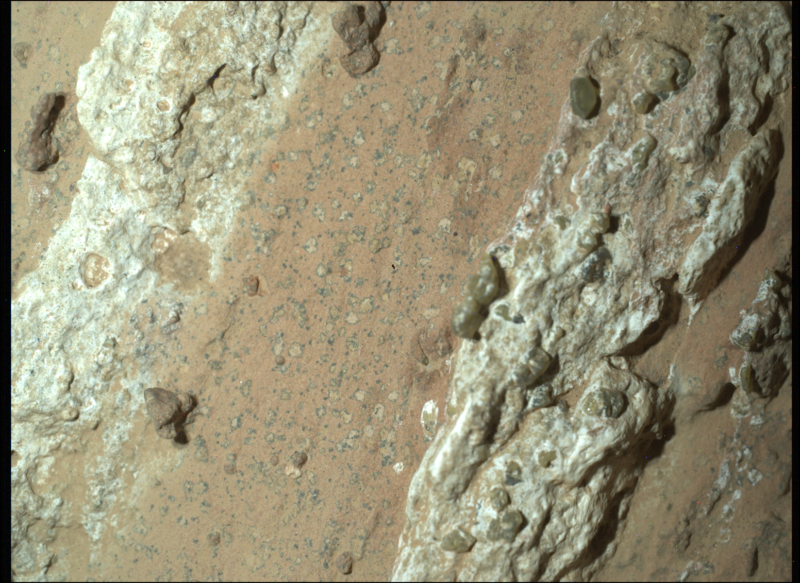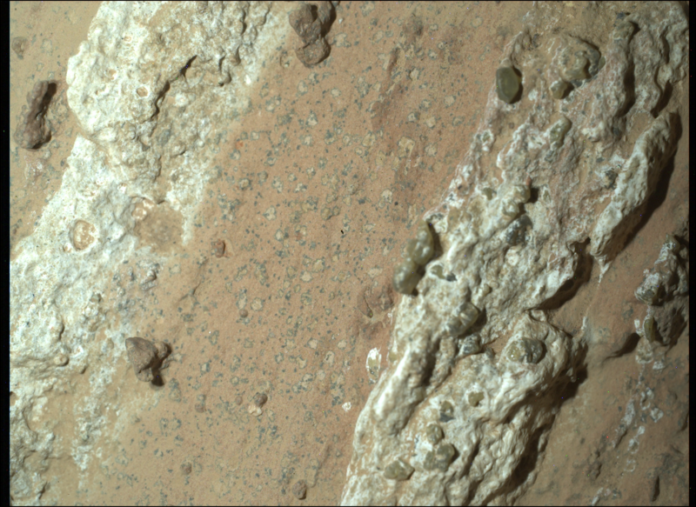
Enlarge / NASA’s Perseverance rover discovered “leopard spots” on a reddish rock nicknamed “Cheyava Falls” in Mars’ Jezero Crater in July 2024. (credit: NASA/JPL-Caltech/MSSS)
NASA's Perseverance rover has found a very intriguing rock on the surface of Mars.
An arrowhead-shaped rock observed by the rover has chemical signatures and structures that could have been formed by ancient microbial life. To be absolutely clear, this is not irrefutable evidence of past life on Mars, when the red planet was more amenable to water-based life billions of years ago. But discovering these colored spots on this rock is darn intriguing and has Mars scientists bubbling with excitement.
"These spots are a big surprise," said David Flannery, an astrobiologist and member of the Perseverance science team from the Queensland University of Technology in Australia, in a NASA news release. "On Earth, these types of features in rocks are often associated with the fossilized record of microbes living in the subsurface."
Read 7 remaining paragraphs | Comments
Ars Technica - All contentContinue reading/original-link]




